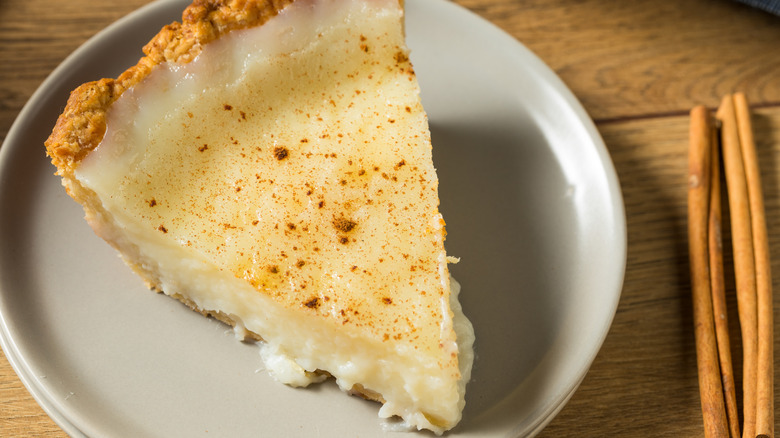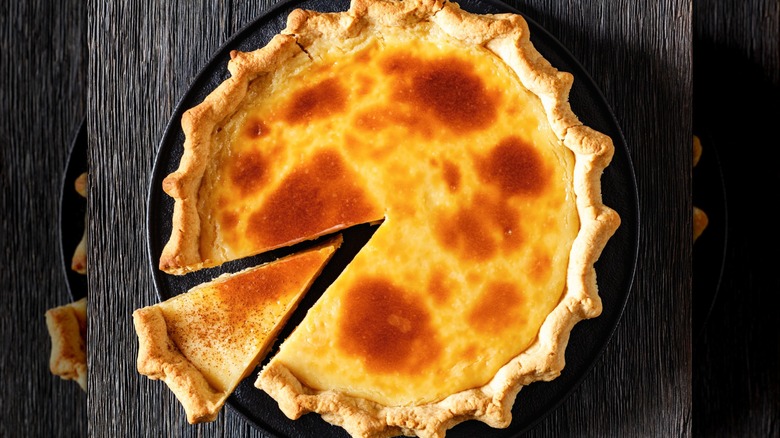How This Simple Sweet Pie Became An Indiana Icon
Folks from Indiana (Hoosiers as they call themselves) are known for their self-reliance and resourcefulness. So, it's no wonder that a tasty dessert like sugar cream pie, made with only a handful of common ingredients, became the state's unofficial pie. With milk and sugar as its main components, the pie is sticky, sweet, and creamy — like a less nutty pecan pie. Passionate about their local fare, the people of Indiana even pushed to make it the state's official pie in 2009. However, due to the trials and tribulations of bureaucracy, it never came to be.
Though the origins of Indiana's most famous pie are hazy, many credit the local Amish or Shaker communities for its invention. Nevertheless, there is a recipe for the pie dating back to 1816, the same year Indiana became a state, which is nearly 15 years before the arrival of the Amish. Either way, these ingredients were easy to scrape up together on most farms, especially when more luxurious ingredients like fruit were in short supply. This earned the pie one of its common nicknames — "desperation pie." It was under this moniker that the pie became a Depression-era favorite.
Around this time, the popularity of the no-frills sugar cream pie skyrocketed, thanks to the accessibility and affordability of its ingredients. One Indiana native, Duane "Wick" Wickersham, started commercially selling pies based on his grandmother's recipe in the 1940s. It quickly went from desperation pie to the most popular food in the state of Indiana, and Wick's Pies became a household name.
Hoosiers keep it sweet and simple
Whipping up a sugar cream pie the way the Hoosiers have done it for 200 years is easy with sugar, butter, milk (or heavy cream), flour, vanilla, and a touch of salt. While some folks might add eggs, traditionalists will tell you that makes it a custard. Instead, flour or cornstarch thicken the creamy filling.
There are a couple of ways to make a classic sugar cream pie. If you're making your crust from scratch, use both butter and shortening in your pie crust for a rich, flavorful dough that will be easier to work with. While some folks prefer to bake the crust and the creamy filling together, others say better results are achieved if the crust is baked first, then filled and baked again. Some older recipes might even instruct you to stir the filling with your finger part of the way through the baking process, ensuring that the layers of butter, sugar and cream meld together into an indecipherable cloud of deliciousness. It is this quirky little trick that earns the dessert its less-appetizing nickname, "finger pie."
It's also what differentiates Wick's Sugar Cream Pie from the original recipe given to Duane Wickersham by his grandmother. Without this intimate attention to detail, Wick's version has a distinct separation between the butter and sugar layer and the creamy layer. Still, that hasn't seemed to slow business down. Today, the company makes 10,000 of the pies during each eight-hour shift.

